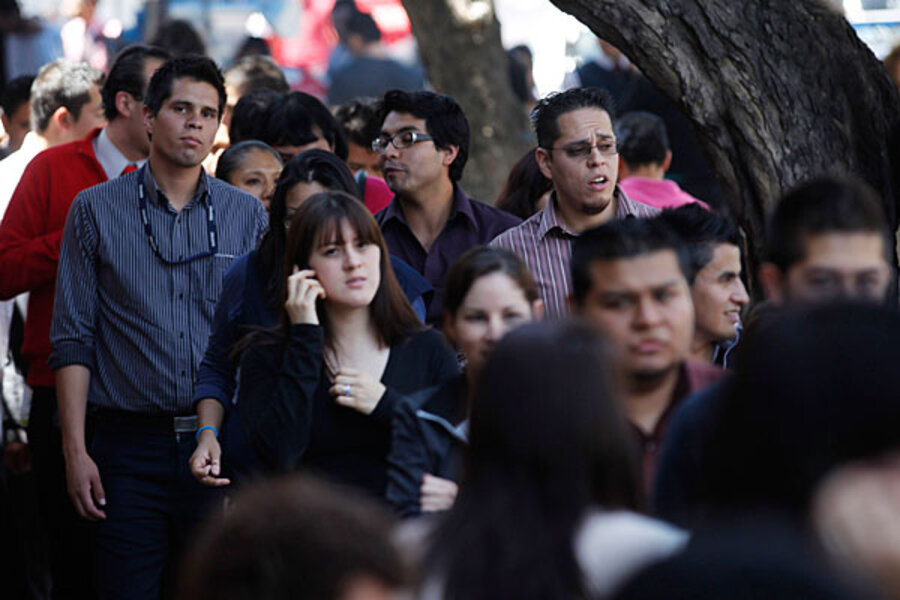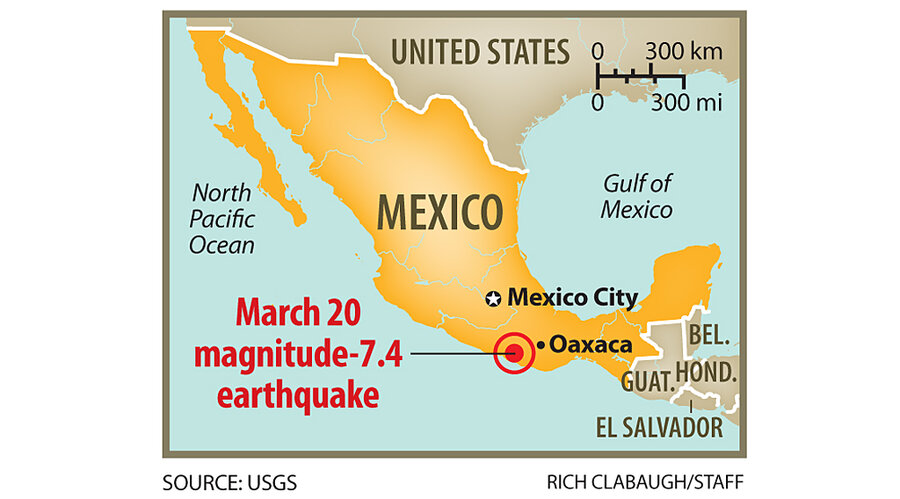Mexico's earthquake: A reporter's notebook
Loading...
| Mexico City
I have lived in Mexico City for six years and never worried much about earthquakes. But now I have a baby. And as all parents will understand, earthquakes have now joined the list of things like airplane turbulence and speeding taxis, to name but a few, that I now care desperately about.
So when the unusually long and strong earthquake shook this city right after noon local time, as I was typing away at a local Starbucks where I often work, I slammed shut my laptop and ran as fast as I could home (losing a powercord and mouse along the way).
The streets were packed with people who had evacuated, looking up at the highrises around us, wondering if there was damage and if buildings would hold. As I looked up and ran, I kept thinking not about what lay in my own path, but that the buildings standing firm must mean that mine probably did too.
Everyone was fine at home, my sweet baby outside with her caretaker and the rest of our neighbors. But the earthquake was the biggest that I felt since living here. It measured in at 7.4 according to the US Geological Survey, which initially put it at 7.9, and the center was in Guerrero state. On Twitter, President Felipe Calderon said there appears to be no serious damage. "The health system is operating normally, except for some broken glass and other minor damage," he wrote in a Twitter post.
The quake shook central and southern Mexico, with damage including a fallen bridge and swaying office towers in Mexico City. Some 60 homes are reported damaged near the epicenter of the quake, and there are currently no reported deaths, according to the Associated Press.
I am writing this “reporters on the job” from outside my house right now on the sidewalk. For the first time in about a half dozen temblors that have prompted us to evacuate the house, we do have damage. Our walls are cracked, as it appears that our apartment and that of our neighbor slammed into one another. (Their windows are blown out.) Right now we are waiting for the authorities to assess whether there is structural damage.
It's certainly not dramatic, but we do have broken shards of glass across our entrance and plaster across the front hallway. As I am sitting here, I see the front walling of our apartment blown off, and it immediately brings me back to the horrors of Haiti's earthquake in January 2010, my first and only first-hand experience with a disaster that devastating.
But for millions of Mexicans, it is their 1985 earthquake in this capital city that killed close to 10,000 people that spooks them, bringing panic to the streets each time a temblor hits. Quite simply, it is really scary, but especially if you have lived through the possibilities.
About two months ago, on a Saturday night, another big quake struck. We were watching a movie and flew down the stairs, grabbed the baby, and went outside. I had trouble sleeping that night, but at least we were together. There is nothing worse than being separated from family when there is a possibility that someone is hurt.
Cell phone service was out, so neighbors were unable to reach their relatives. I had gone upstairs briefly and brought down my US Vonage phone, and from that people were able to reach the landlines of their neighbors.
People always ask me how I feel living in Mexico City with all the gruesome drug violence. Honestly, I rarely think about it, except to take precautions against kidnapping. But after the last quake I kept imagining the ground shaking for weeks afterwards. Who knows how long it will last this time....
Get daily or weekly updates from CSMonitor.com delivered to your inbox. Sign up today.






